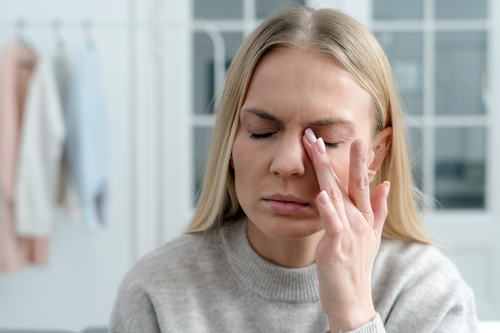
Dry eye affects millions of people worldwide. It occurs when your eyes cannot produce sufficient tears or when the tears evaporate quickly. The condition can cause vision problems if left untreated.
Dry Eye Symptoms
Dry eye symptoms can differ from one individual to the next. They can include a feeling of grit or dryness in the eyes. It causes a burning or stinging sensation in the eyes. You can also experience blurred vision, sensitivity to light, redness, or eye irritation. These symptoms can be uncomfortable. They can interfere with daily activities like driving or reading.
It is important to note that you may also experience excessive tearing as a dry eye symptom. It can confuse some people. When your eyes' ability to create enough tears is compromised, your body’s natural response is to produce more tears to compensate. However, these tears are often of poor quality. They do not provide adequate lubrication, leading to dry eye symptoms.
Causes of Dry Eye
Several factors lead to the development of dry eye. Age is a factor that commonly causes dry eyes because tear production decreases as you age. Medical conditions like thyroid problems and diabetes can also heighten the chances of dry eye. Environmental factors like exposure to dry air and wind can cause dry eyes, as can prolonged use of electronic devices and reading.
Some medications can cause dry eyes as a side effect. Antihistamines, antidepressants, and blood pressure medications are just a few examples. Hormonal changes, such as those occurring during pregnancy or menopause, can increase your risk of dry eye.
Diagnosis
A dry eye diagnosis involves a combination of symptoms and a comprehensive eye exam. Your eye doctor may use unique dyes to assess your tear quality and the volume produced. They may also evaluate your eye surface to check for any signs of inflammation or damage. Your eye doctor may also recommend additional testing. They will do so to rule out other potential causes of your symptoms, like an infection.
Treatment
Dry eye treatment depends on its underlying cause and harshness. Artificial over-the-counter tears lubricate the eyes to help relieve eye dryness. If your eyes do not respond effectively, your eye doctor is likely to recommend that you get medicated eye drops. These drops can improve tear production or reduce inflammation in the eyes.
Punctual plugs may not be ideal for some people. They are tiny devices inserted into your tear ducts. The plugs help prevent quick tear drainage, allowing them to stay on the eye surface longer and provide more lubrication.
Your eye doctor is sure to prescribe other treatments in more severe cases. These can include oral medications or corticosteroid eye drops. They may also recommend a procedure called LipiFlow®. It entails using heat and gentle pressure to unclog the oil glands in the eyelids. Work closely with your eye doctor to determine the best treatment for your specific cause of dry eye.
Potential Complications of Untreated Dry Eye
Dry eye can lead to complications such as corneal ulcers, scarring, and infections if left untreated. In severe cases, it can lead to vision loss. Chronic dry eye can significantly impact the quality of life, causing discomfort and difficulty with daily activities.
For more about dry eye symptoms, visit Erin Mills Eye Clinic at our office in Mississauga, Ontario. Call (647) 496-9500 to book an appointment today.







